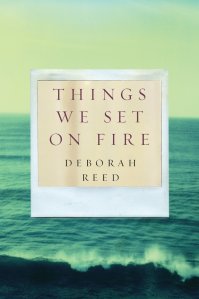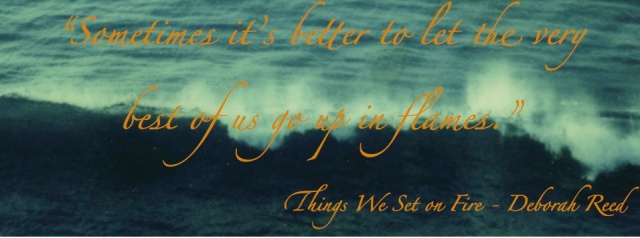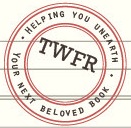Reviewer: Ashley Mackler-Paternostro
A series of tragedies brings Vivvie’s young grandchildren into her custody, and her two estranged daughters back under one roof. Jackson, Vivvie’s husband, was shot and killed thirty years ago, and the ramifications have splintered the family into their own isolated remembrances and recriminations.
Sisters Elin and Kate fought mercilessly in childhood and have avoided each other for years. Elin seems like the last person to watch her sister convalesce after an attempted suicide. But Elin has her own reasons for coming to Kate’s side and will soon discover Kate’s own staggering needs.
This deeply personal, hauntingly melancholy look at the damages families inflict on each other—and the healing that only they can provide—is filled with flinty, flawed, and complex people stumbling toward some kind of peace. Like Elizabeth Strout and Kazuo Ishiguro, Deborah Reed understands a story, and its inhabitants reveal themselves in the subtleties: the space between the thoughts, the sigh behind the smile, and the unreliable lies people tell themselves that ultimately reveal the deepest truths.
Have you wanted to love a book simply because? Because you should, or because you wanted to, or because you’ve enjoyed other offerings from the novelist? That’s how I felt upon beginning my time with The Things We Set on Fire by Deborah Reed. I wanted to love it because this book is my kind of novel — deep with a richly woven narrative, complex and–okay, at times–maddening characters. It’s a story with soul. I should have loved this book, and I did love it, but then…
Things We Set on Fire begins with a brazen act of violence so unexpected that it is bound to give the reader pause. That’s the way it’s designed, for shock and awe. It really is, all things considered, a brilliant way to begin a novel. It leaves one breathless with confusion and worry and does not allow them to set the novel aside, doesn’t allow for one to think ‘maybe this book isn’t for me…’ … it leaps, and you leap with it.
Vivvie was widowed too soon. Left to raise her daughters without the man she had loved since she, herself, was little more than a girl. The death of Vivvie’s husband has a ‘butterfly effect’ on her daughters, Elin–the oldest–and Kate–one year Elin’s junior–in many ways.
Maybe the girls were born destine to bicker and pick at each other mercilessly. Maybe it was the Florida heat that made them ornery. Or maybe it was stress of living in a home where their mother kept an ugly secret that turned her inside out and made her withhold her love that turned them into angry children. Whatever it was in Elin and Kate’s childhood that proved to be a catalyst the anger they felt defined them. And then it happened, something that could have bonded them together. But no, it became a secret they were forced to share. It drove the wedge deeper and the guilt they both felt for having it only stood to break them further apart…leading to a betrayal that would come later in their lives.
The book opens to find the family grown and spread far and wide. From the Pacific Northwest Portland area to the sunny orange groves of Orlando, Florida. The distance between the girls and their mother isn’t accidental, it’s purposeful and deliberate, proving some families simply cannot stay close.
Vivvie is used to living alone now. Her children are grown and gone and are, for all intents and purposes, estranged from her. She works, she tends to her home, she smokes her cigarettes, she flirts with her neighbor, Wink, she keeps her pile of regrets close. Her life now is as peaceable as it is predictable as it is lonely, and considering what it once was when she had her husband and little girls under foot, it’s really only a shadow of what could have been.
Kate is dying by fate and she wants to die by choice. Something is ravaging her body, something in her genetics that is bound and determined to take her away from her daughters slowly, methodically, cruelly. She makes the (selfish?) choice to beat it to the end–why fight the inevitable? A bottle of pills, a quiet night, two little girls sleeping in their beds. She’ll make the ‘leaving’ as simple as she can and spares them the horror of watching their mother–the only real and present parent they have–fade slowly away. But something in her plan went wrong and now she still very much alive, still very much dying and forced to face her mother and sister.
Elin is at a crossroads. Her life, from the outside, is a slice of perfect. A beautiful home, a handsome and worldly husband, a job, her dog. But what looks perfect from the exterior isn’t always so pretty inside: Her husband isn’t the man she believed him to be, and she could use some time away from him to collect her thoughts, or punish him, whichever comes first. So when Vivvie calls to tell her about Kate’s failed suicide attempt, she has no reason not to go home, expect the singular reason that kept away for a very long time.
The Things We Set on Fire is a character book. There is little suspense, little danger, the book focuses most on telling you the story of three generations of women thrown back together and how their interconnected lives unfold when they are forced to not only face each other, but all the things they ran away from. To that end, the characters Reed created are both vibrant and authentic. There is an unmistakable truth to them. They aren’t written for you to like or love or even relate to…they are written merely in the vein of feeling real. They are flawed and erratically, helplessly human which only adds to the charm of this book. And as the novel picks up speed, you will find yourself drawn to them because Reed goes to great lengths to explain them to you, to tell you precisely what it is that makes them so broken so you can understand and care.
Things We Set on Fire is a beautiful book, but the things that make this novel beautiful–the intense use of flowery language, descriptors for even the most minute details–also prove to be the novel’s primary hurdle. The language is thick, verbose, at time staggering and causes the book, for me at least, to sag a little. I found myself getting lost in it, almost losing track of the story because I was so immersed in the way –for example–the fireflies looked. It’s not bad, and Reeds precise details of ordinary moments are lovely in moderation, but it came to be distracting page after page, sentence after sentence.
I liked this book very much…but I wanted to love it. Isn’t that always so disappointing? Regardless, The Things We Set on Fire is well worth the read and I have a feeling few will regret giving the novel time and I have a suspicion that fans of Deborah Reed will cheer.
Bonus: You can pick this book up now BEFORE it’s actual publication date in December on Amazon. Prime members can read for free, while non-Prime readers can get the book for a modest discount.
TWFR Rating: 4 Stamps…Really good, highly enjoyable!



